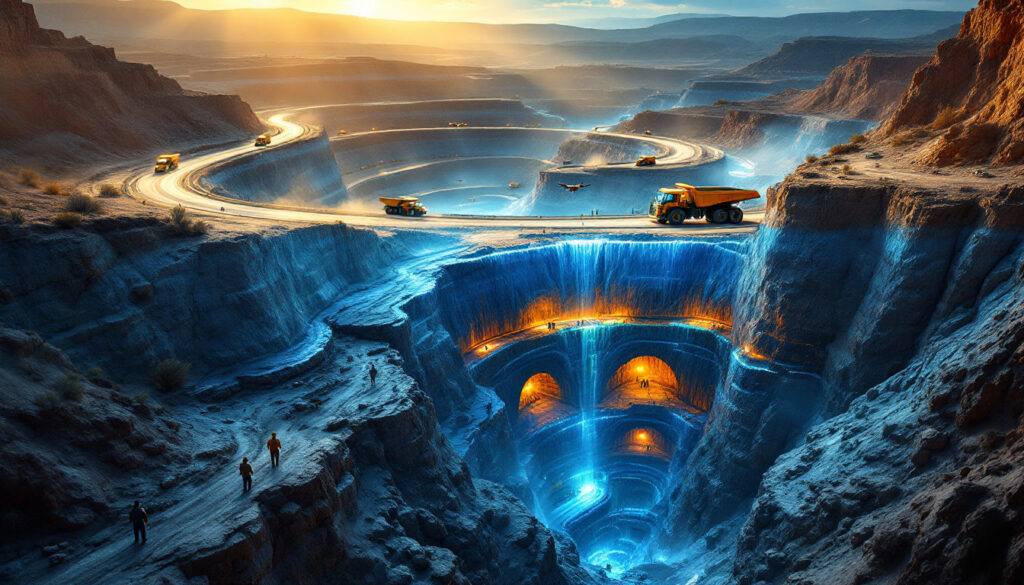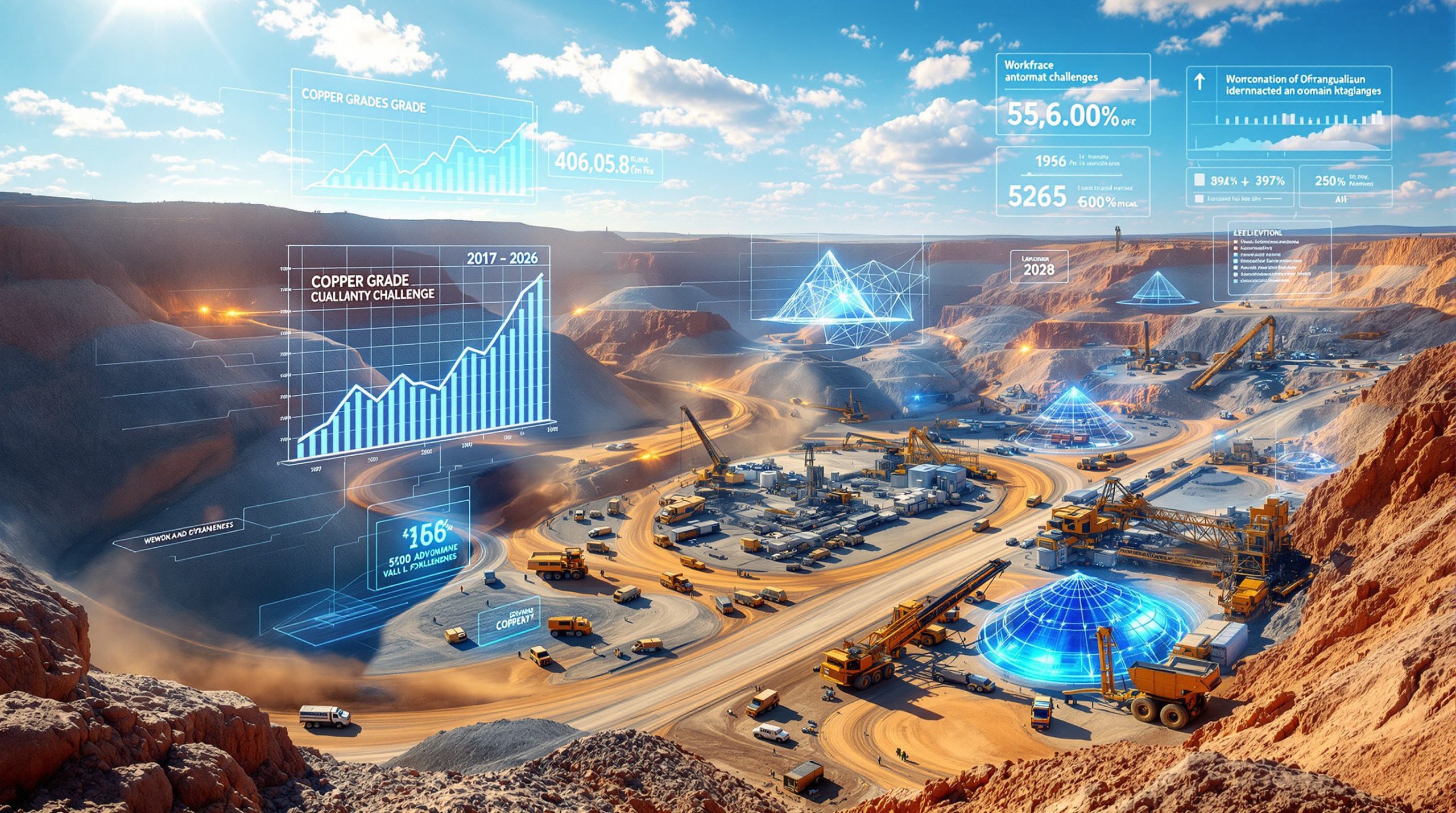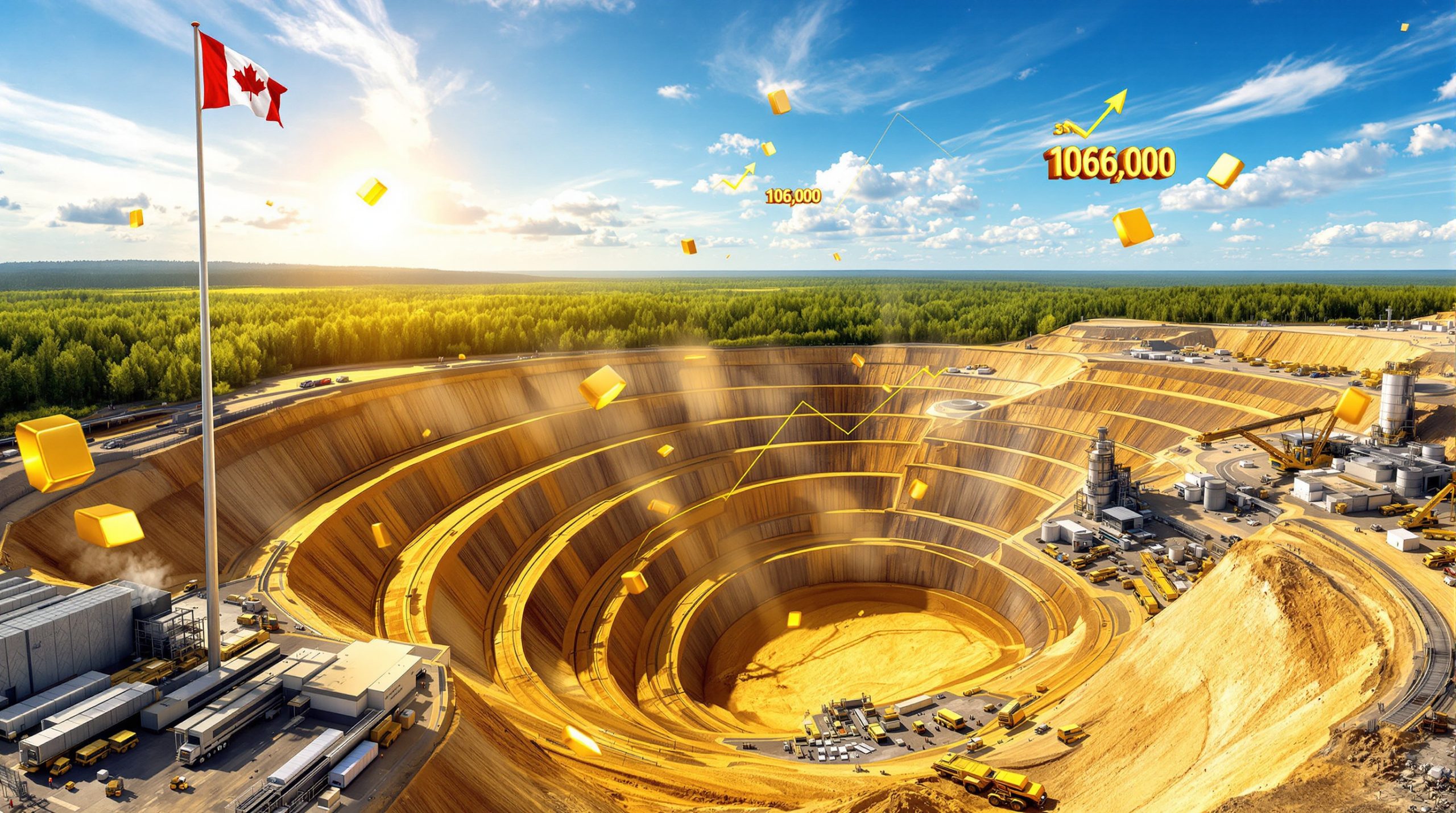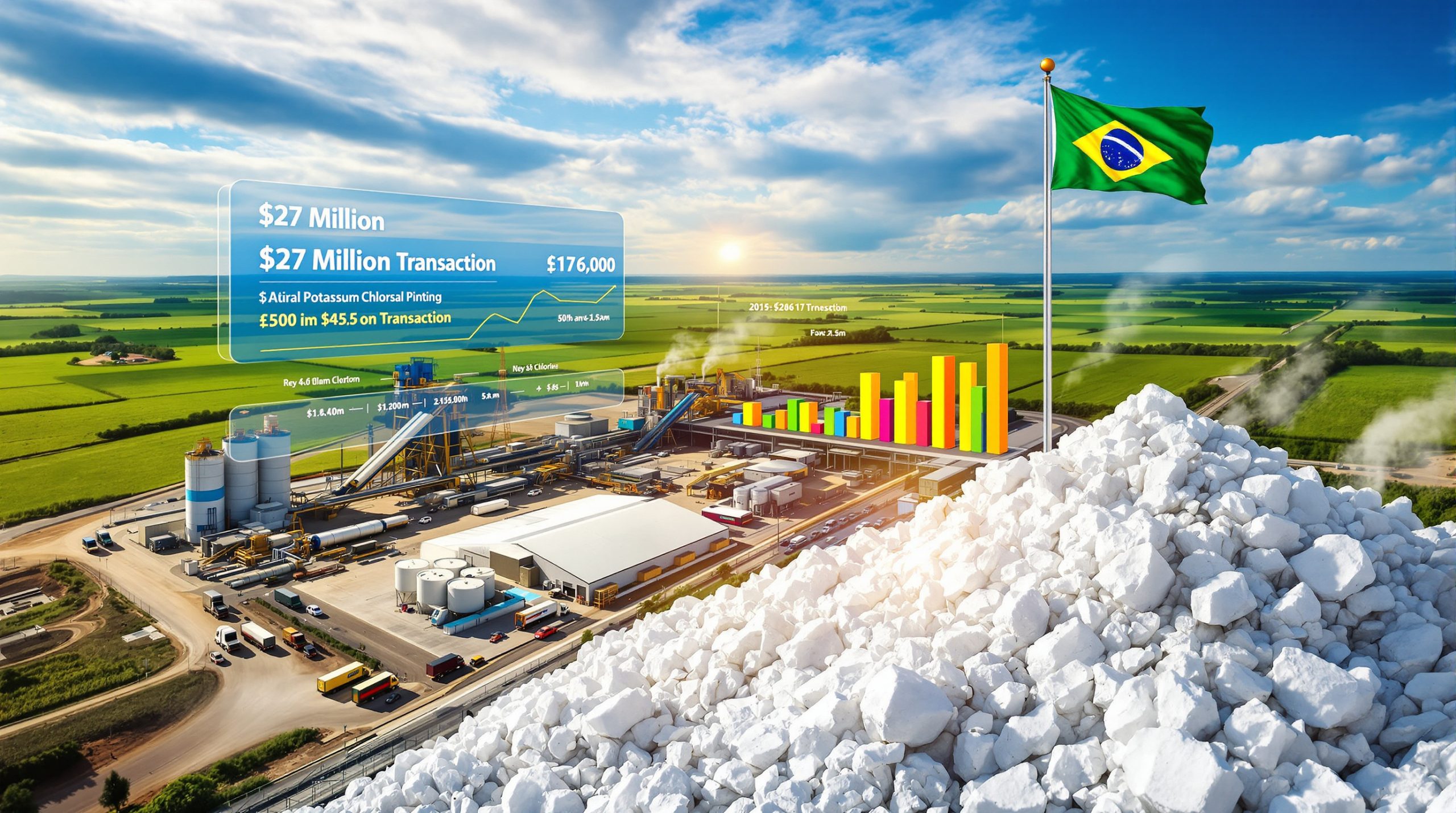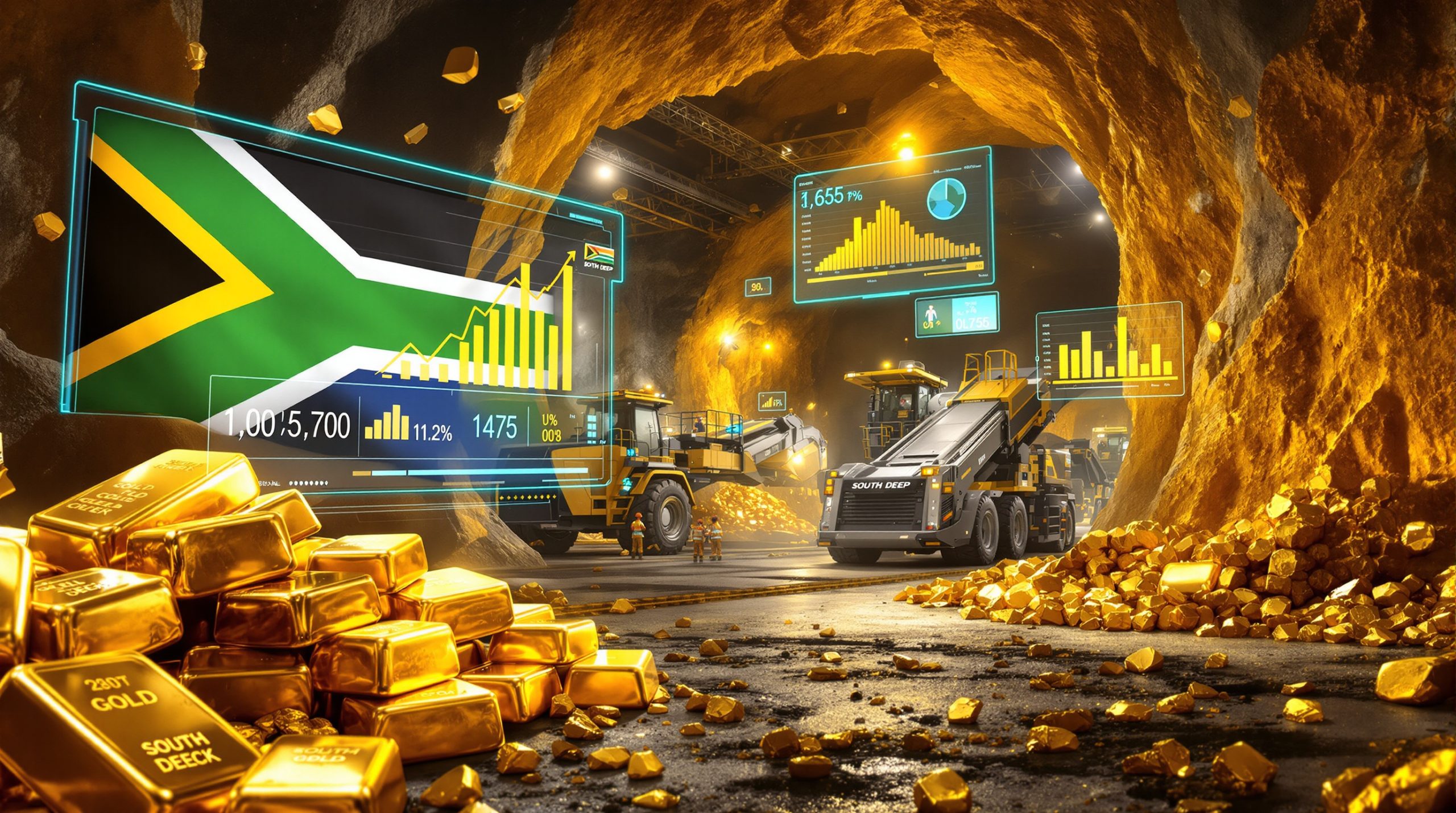What is Mining and Why is it Important?
Mining is the process of extracting valuable minerals and geological materials from the Earth's crust. This fundamental industry provides the raw materials that form the backbone of modern civilization—from the metals in smartphones to the coal that generates electricity in many regions.
Mining operations supply nearly 95% of materials needed for energy production and 80% of construction supplies worldwide. Global iron ore production—critical for steel manufacturing—exceeded 2.5 billion metric tons in 2023, highlighting the industry's massive scale.
As industry experts note, "Mining is the backbone of modern infrastructure, from skyscrapers to smartphones," emphasizing its foundational role in contemporary society.
How Mining Supports Modern Life
Mining delivers essential resources that power virtually every aspect of our daily lives:
-
Construction materials: Iron ore for steel, limestone for cement, and aggregates for concrete
-
Technology components: Copper for wiring, lithium for batteries, and rare earth elements for electronics
-
Energy production: Coal, uranium, and natural gas for power generation
-
Agricultural inputs: Phosphate and potash for fertilizers
-
Consumer goods: Gold for jewelry, silver for electronics, and graphite for pencils
Without mining, we would lack the fundamental building blocks needed for infrastructure, technology, energy systems, and countless everyday products.
Types of Mining Operations
Mining methods vary based on geological location, depth, and type of resource being extracted. Each approach has distinct characteristics, advantages, and challenges.
Surface Mining Techniques
When valuable minerals exist near the Earth's surface, surface mining provides the most economical extraction method. Surface mining accounts for approximately 60% of global coal extraction due to its efficiency and lower costs compared to underground methods.
Open-Pit Mining
This method creates large excavations by removing layers of soil and rock to access mineral deposits. Open-pit mines typically feature:
-
Terraced designs with multiple benches
-
Haul roads for heavy equipment
-
Massive scale operations that can span kilometers in diameter
Open-pit mining is commonly used for copper, gold, and iron ore extraction. Notable examples include Chile's Chuquicamata mine, which ranks among the world's largest open-pit copper operations.
Strip Mining
Used primarily for coal and phosphate extraction, strip mining involves:
-
Removing overburden (surface layers) in long strips
-
Extracting the exposed mineral seam
-
Backfilling the previous strip with overburden as mining progresses
-
Rehabilitating the land after extraction
This method allows for efficient extraction of horizontal mineral deposits while enabling progressive land reclamation.
Quarrying
Specialized for dimension stone extraction, quarrying focuses on:
-
Removing blocks of marble, granite, limestone, and sandstone
-
Preserving the structural integrity of the stone
-
Using specialized cutting techniques to extract uniform blocks
Quarrying produces materials essential for construction, monuments, and decorative applications.
Underground Mining Methods
When deposits lie deep beneath the surface, underground mining becomes necessary despite higher costs and safety challenges:
Room and Pillar Mining
This technique creates a grid-like pattern by:
-
Excavating "rooms" of ore while leaving "pillars" of untouched material
-
Using the pillars to support the mine roof
-
Maintaining structural integrity of the underground space
-
Commonly applied in coal, salt, and potash mining
As mining engineers often point out, "Room and pillar mining balances resource recovery with structural safety," making it suitable for deposits with consistent thickness and moderate depth.
Longwall Mining
Highly mechanized and efficient for coal extraction, longwall mining features:
-
A movable roof support system
-
Mechanical shearers that cut along a coal face
-
Conveyor systems that transport coal to the surface
-
High recovery rates of available resources (up to 80%)
Longwall operations achieve significantly higher productivity than room and pillar methods in suitable geological conditions.
Cut and Fill Mining
Used for irregular or steeply inclined ore bodies, this method involves:
-
Extracting ore in horizontal slices
-
Backfilling the void with waste rock or tailings
-
Working upward through the deposit in layers
-
Providing greater stability in challenging geological conditions
This technique allows access to complex ore bodies that would be impractical to mine using other methods.
Placer Mining
Designed for extracting minerals from loose sediments, placer mining targets:
-
Alluvial deposits in riverbeds, beaches, and floodplains
-
Valuable minerals like gold, diamonds, and tin
-
Materials that have been naturally separated from surrounding rock
-
Deposits formed through water or glacial action
Common placer mining techniques include panning, sluicing, and dredging operations.
How Does the Mining Process Work?
Mining involves a complex sequence of activities that extend far beyond the actual extraction of minerals.
Exploration and Discovery
Before any mining begins, companies must locate viable mineral deposits through:
-
Geological surveys: Analyzing rock formations and structures
-
Geochemical sampling: Testing soil and water for mineral indicators
-
Geophysical methods: Using magnetometers, gravimeters, and seismic surveys to detect ore bodies at depths exceeding 1 km
-
Exploratory drilling: Obtaining core samples to determine mineral content
The exploration phase can span 2-10 years, with mining experts emphasizing that "exploration drilling accuracy determines a project's economic viability." Understanding ore deposit geology is fundamental to successful mineral exploration.
Feasibility Assessment
Once a potential deposit is identified, comprehensive studies determine if mining is economically viable:
-
Resource estimation: Calculating the quantity and quality of minerals present
-
Economic analysis: Projecting costs, revenues, and return on investment
-
Technical evaluation: Determining appropriate mining methods
-
Environmental impact assessment: Identifying potential ecological effects
-
Social considerations: Evaluating impacts on local communities
Mining feasibility studies typically take 1-3 years to complete and play a crucial role in securing project financing.
Mine Development and Construction
If a project receives approval, development begins with:
-
Building access roads and transportation infrastructure
-
Constructing processing facilities and support buildings
-
Installing power, water, and waste management systems
-
Establishing worker accommodations and safety facilities
-
Preparing the site for extraction operations
This phase requires 1-5 years depending on project complexity and location.
Active Extraction Operations
The core mining phase involves:
-
Removing overburden or creating access tunnels
-
Drilling, blasting, or cutting to fragment the ore
-
Loading and hauling materials to processing facilities
-
Continuous monitoring of safety conditions
-
Managing water inflow and ventilation systems
Mining operations employ increasingly sophisticated equipment, including automated drilling systems and remote-controlled machinery.
Mineral Processing and Refinement
Raw materials undergo several processing steps:
-
Crushing and grinding: Reducing ore to smaller particles
-
Separation: Isolating valuable minerals from waste rock
-
Concentration: Increasing the percentage of target minerals
-
Refining: Purifying the concentrate to market specifications
-
Transportation: Moving final products to market
Modern processing removes approximately 90% of waste rock before refinement, significantly improving efficiency and reducing environmental impact.
Reclamation and Closure
Responsible mining includes comprehensive site restoration:
-
Reshaping the land to stable contours
-
Replacing topsoil and establishing vegetation
-
Monitoring and treating water quality
-
Dismantling unnecessary structures
-
Implementing long-term environmental management plans
Effective reclamation transforms former mining sites into productive land for agriculture, recreation, or wildlife habitat.
Environmental and Social Impacts of Mining
Mining operations can significantly affect both natural environments and human communities.
Environmental Challenges
The extraction process can lead to several ecological concerns:
-
Habitat disruption: Clearing land and altering landscapes
-
Water impacts: Acid mine drainage, sedimentation, and chemical contamination affecting an estimated 12,000 km of rivers globally
-
Air quality issues: Dust, emissions from equipment, and processing releases
-
Soil degradation: Erosion, compaction, and contamination
-
Biodiversity loss: Displacement of native species and ecosystem disruption
Mining operations contribute to approximately 10% of global deforestation, particularly in biodiverse regions. As highlighted by the National Geographic education resource, the environmental impacts of mining remain a significant global concern.
Social Considerations
Mining activities also influence nearby communities:
-
Economic effects: Job creation, business opportunities, and revenue generation
-
Community displacement: Relocation of residents from mining areas
-
Cultural impacts: Changes to traditional lifestyles and land use
-
Infrastructure development: Roads, schools, and healthcare facilities
-
Health concerns: Potential exposure to pollutants and safety risks
The social impacts of mining vary significantly based on regulatory frameworks and corporate practices.
Sustainable Mining Practices
Modern mining increasingly incorporates sustainability measures:
-
Water conservation: Recycling process water and minimizing freshwater use
-
Energy efficiency: Implementing renewable energy and reducing consumption
-
Emissions reduction: Using cleaner technologies and capturing pollutants
-
Biodiversity programs: Protecting sensitive areas and restoring habitats
-
Community engagement: Involving local stakeholders in decision-making
According to industry sustainability experts, "Sustainable practices reduce water usage by 50% in modern mines," demonstrating significant progress in environmental stewardship. The industry faces numerous ESG challenges and opportunities as it transitions to more sustainable practices.
How Technology is Transforming Mining
The mining sector is experiencing rapid technological evolution that is reshaping operations.
Automation and Robotics
Advanced machinery is changing how mining tasks are performed:
-
Autonomous vehicles: Self-driving haul trucks and loaders that reduce fuel costs by approximately 15%
-
Remote-controlled equipment: Operating machinery from safe distances
-
Robotic drilling systems: Precise and consistent boring operations
-
Automated conveyor networks: Efficient material transport
-
Inspection drones: Monitoring inaccessible or dangerous areas, cutting surveying time "from weeks to hours"
Major mining companies like Rio Tinto have implemented AutoHaul™, the world's largest autonomous rail network, demonstrating the industry's commitment to automation.
Digital Technologies
Data-driven approaches enhance decision-making and efficiency:
-
AI and machine learning: Optimizing operations and predicting maintenance needs with 30% improved ore grade prediction accuracy
-
IoT sensors: Monitoring equipment performance and environmental conditions, including real-time gas levels in underground mines
-
3D modeling: Creating detailed digital representations of deposits
-
Predictive analytics: Forecasting production challenges and opportunities
-
Blockchain applications: Tracking mineral provenance and supply chains
These digital solutions create interconnected operations that optimize resource extraction while minimizing environmental impact. Digital transformation in mining has become essential for maintaining competitiveness in the industry.
Furthermore, many mining companies are implementing digital twins technology to create virtual replicas of physical mining operations, enabling real-time monitoring and optimization of processes.
Safety Innovations
New technologies are making mining significantly safer:
-
Proximity detection systems: Preventing collisions and accidents
-
Real-time gas monitoring: Detecting hazardous conditions immediately
-
Wearable technology: Tracking worker location and vital signs
-
Virtual reality training: Preparing workers for emergency scenarios
-
Exoskeletons: Reducing physical strain during manual tasks
Technological innovations have contributed to a significant decline in mining accidents and fatalities over the past decade.
Why Do People Invest in Mining?
Mining presents unique investment opportunities with specific characteristics and potential returns.
Economic Fundamentals
Several factors make mining attractive to investors:
-
Essential resource production: Meeting fundamental global demand
-
Commodity price exposure: Potential for significant upside during price increases
-
Inflation hedge: Hard assets that often retain value during currency devaluation
-
Portfolio diversification: Different risk profile from other investment sectors
-
Long-term growth potential: Increasing resource demand from developing economies
Mining investments can provide both income through dividends and capital appreciation through asset value growth.
Investment Vehicles
Investors can participate in mining through various channels:
-
Mining company stocks: Direct ownership in producers and explorers
-
ETFs and mutual funds: Diversified exposure across multiple mining companies
-
Royalty and streaming companies: Financing arrangements with lower operational risk
-
Physical commodities: Owning metals like gold and silver directly
-
Junior explorers: Higher-risk opportunities in early-stage mineral discovery
Each investment vehicle offers different risk-reward profiles, allowing investors to align mining investments with their financial goals.
Market Drivers
Several factors influence mining investment performance:
-
Global economic growth: Driving demand for construction and manufacturing materials
-
Technological transitions: Creating new markets for specific minerals
-
Urbanization trends: Increasing infrastructure and housing requirements
-
Energy transformation: Shifting demand toward battery metals and away from fossil fuels
-
Supply constraints: Resource nationalism, declining grades, and permitting challenges
The mining investment landscape continues to evolve as global priorities shift toward sustainability and electrification.
What Risks Should Mining Investors Consider?
While mining offers significant opportunities, it also presents substantial risks.
Market Volatility
Commodity markets can experience extreme price fluctuations due to:
-
Supply-demand imbalances: Production changes or consumption shifts
-
Currency movements: Particularly US dollar strength or weakness
-
Speculative trading: Amplifying price movements beyond fundamentals
-
Economic cycles: Boom and bust patterns affecting resource demand
-
Substitution threats: Alternative materials replacing traditional commodities
Historical price charts show commodity price swings of 50% or more within single years, highlighting the sector's volatility.
Operational Challenges
Mining companies face numerous operational hurdles:
-
Resource uncertainty: Actual deposits may differ from estimates
-
Technical difficulties: Equipment failures and geological complexities
-
Cost inflation: Rising expenses for labor, energy, and materials
-
Production disruptions: Weather events, labor disputes, and equipment breakdowns
-
Infrastructure limitations: Inadequate transportation or power supply
Operational issues can significantly impact profitability, as seen in major projects like Mongolia's Oyu Tolgoi mine, which faced substantial delays due to permitting disputes.
Geopolitical Considerations
Mining operations often face political and regulatory pressures:
-
Resource nationalism: Government intervention or expropriation
-
Regulatory changes: Shifting environmental standards or taxation
-
Political instability: Regime changes affecting mining agreements
-
Community relations: Local opposition to mining activities
-
International conflicts: Trade restrictions or regional tensions
Geopolitical factors have increasingly affected mining investments, particularly in critical mineral supply chains.
Environmental and Social Governance (ESG)
Increasingly important factors affecting mining investment include:
-
Climate change policies: Carbon pricing and emissions regulations
-
Water management requirements: Stricter controls on usage and discharge
-
Community consent: Growing need for social license to operate
-
Investor expectations: Institutional demands for responsible practices
-
Consumer preferences: Downstream pressure for ethically sourced materials
ESG considerations have become central to mining investment decisions, with many institutional investors screening companies based on sustainability metrics.
What Does the Future of Mining Look Like?
The mining industry is evolving rapidly to address challenges and embrace new opportunities.
Technological Innovation
Future mining will be characterized by advanced technologies:
-
Deep mining capabilities: Accessing resources at previously impossible depths
-
Precision extraction: Targeting specific mineral zones with minimal waste
-
In-situ recovery: Dissolving and extracting minerals without traditional mining
-
Real-time optimization: Adjusting operations based on continuous data analysis
-
Integrated digital ecosystems: Connecting all aspects of mining operations
These technological advancements will transform mining from a labor-intensive industry to a highly automated, precision-driven sector.
Sustainability Transformation
Environmental considerations are reshaping mining approaches:
-
Carbon-neutral operations: Renewable energy and electrified equipment
-
Circular economy integration: Reprocessing waste and maximizing resource recovery
-
Biodiversity positive initiatives: Creating net ecological benefits
-
Water-free processing: Developing techniques that eliminate or drastically reduce water use
-
Collaborative stewardship: Working with communities on shared environmental goals
Leading mining companies have committed to net-zero emissions targets, signaling a fundamental shift in operating practices.
Critical Mineral Focus
Strategic resources are becoming increasingly important:
-
Battery metals supply chains: Securing lithium, cobalt, nickel, and graphite
-
Rare earth element production: Supporting advanced electronics and defense
-
Green technology materials: Meeting demand for solar, wind, and hydrogen systems
-
Regional supply security: Reducing dependence on concentrated production areas
-
Urban mining development: Recovering minerals from waste streams and recycling
The global transition to clean energy technologies is projected to increase demand for critical minerals by 400-600% by 2040.
Workforce Evolution
The mining profession is undergoing significant changes:
-
Skill transformation: Shifting from physical labor to technical expertise
-
Remote operations centers: Controlling mining activities from distant locations
-
Diverse talent pools: Attracting workers from various backgrounds and disciplines
-
Continuous learning systems: Adapting to rapidly changing technologies
-
Collaborative robotics: Humans working alongside automated systems
The mining workforce of the future will require advanced digital skills,
Want to Identify the Next Major Mining Discovery?
Discover high-potential ASX mining announcements as they happen with Discovery Alert's proprietary Discovery IQ model, which transforms complex mineral data into actionable investment opportunities. Explore why major mineral discoveries can lead to significant market returns by visiting Discovery Alert's dedicated discoveries page, and begin your 30-day free trial to position yourself ahead of the market.
